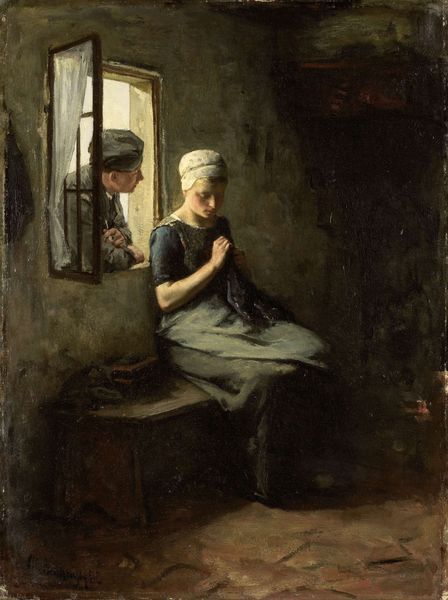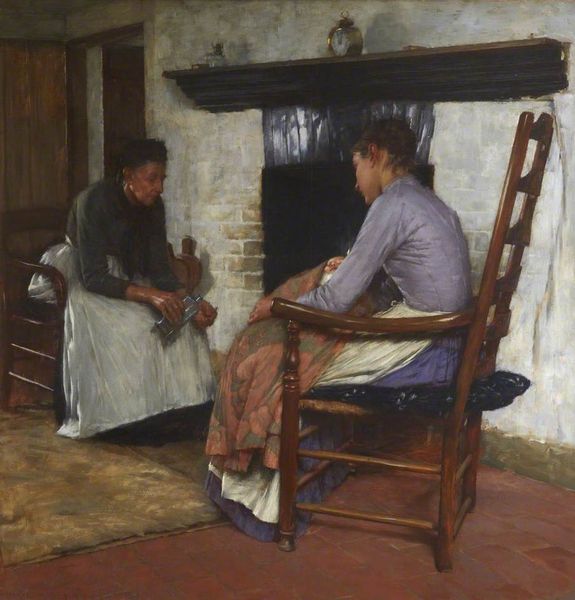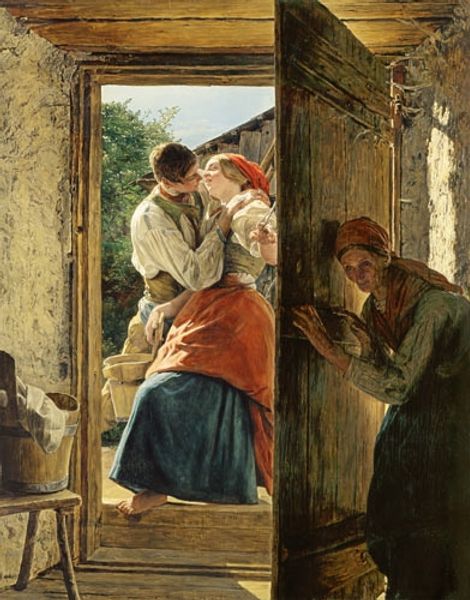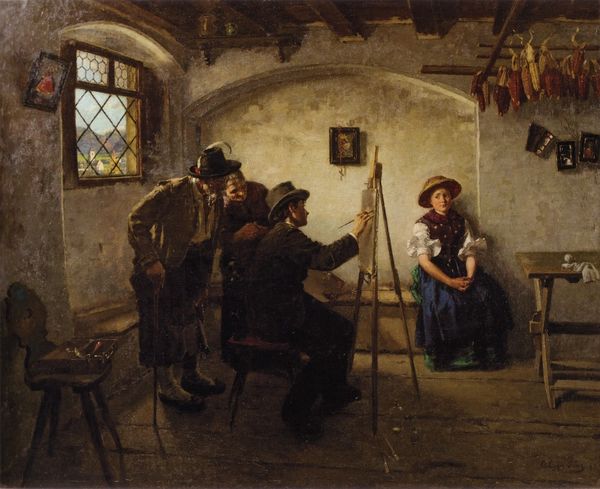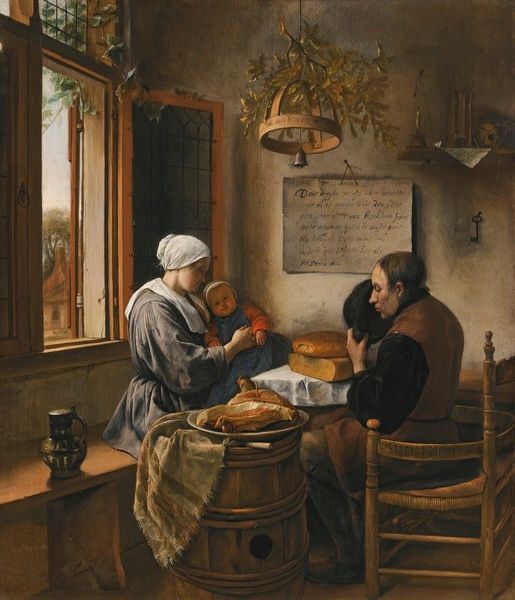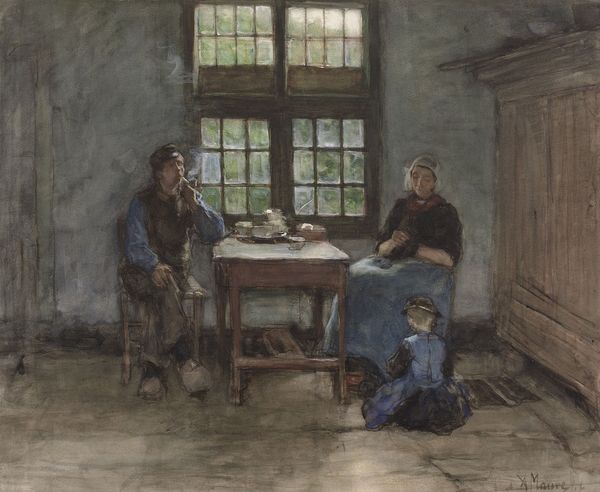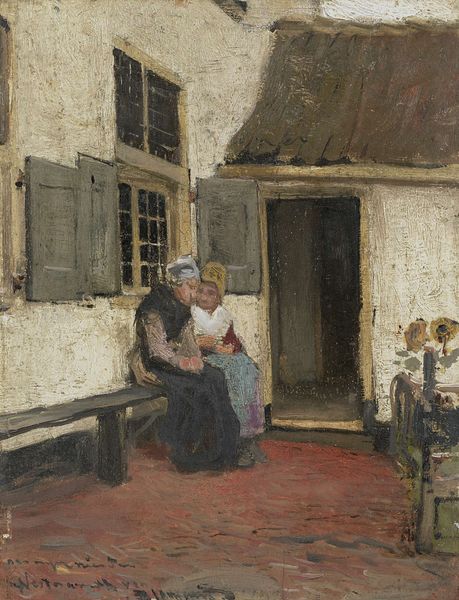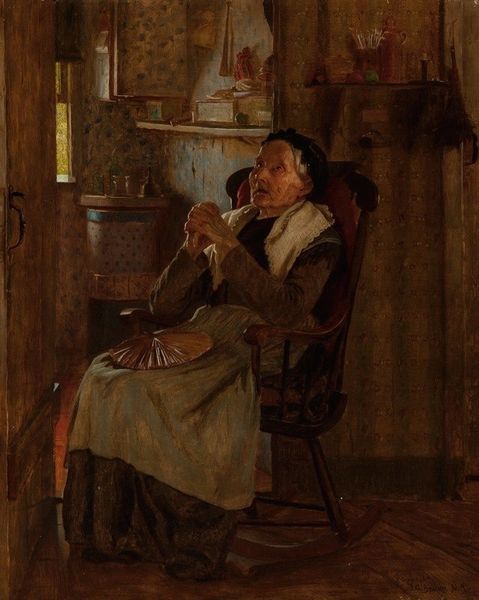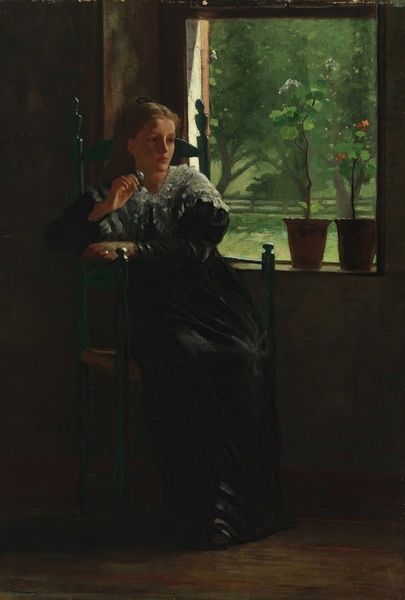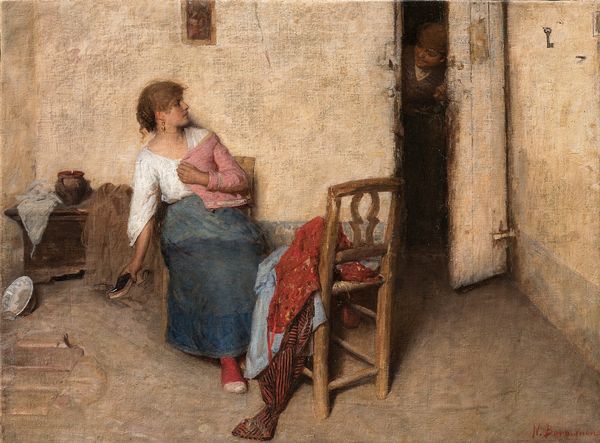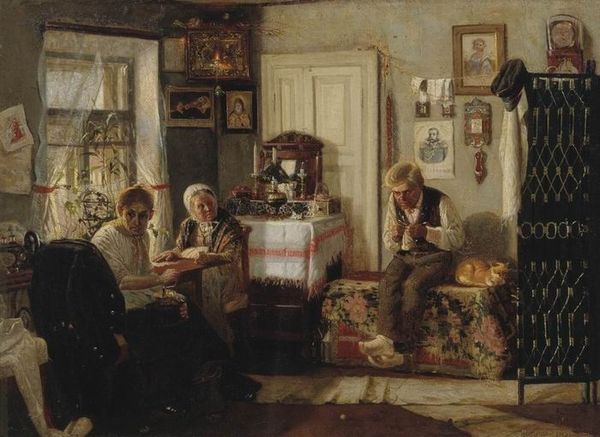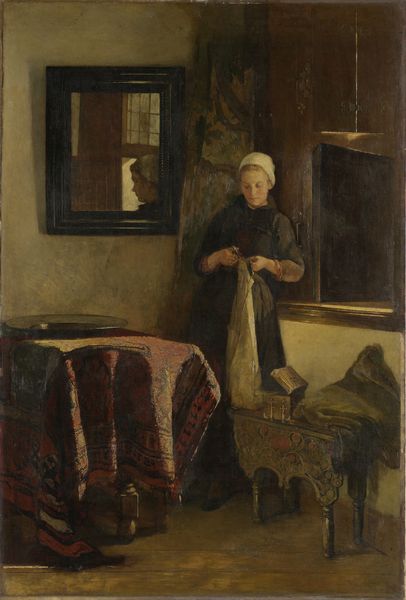
Copyright: Public Domain: Artvee
L.A. Ring painted this work about small landholders, probably in the late 19th century, on the Danish island of Zealand. The image seems simple, but it creates meaning through understated visual codes, like the man's wooden clogs, the portraits on the wall, and the bare interior. Denmark at this time was undergoing significant social and economic changes, with a growing landless peasantry and increasing urbanization. Ring, who came from a similar background, often focused on the lives of rural laborers and their relationship to the land. The painting is not overtly political, but it subtly comments on the social structures of its time, portraying the dignity and quiet resilience of a class often overlooked in official narratives. As historians, we can delve into the agricultural policies, census records, and social histories of the period to better understand Ring's work. The meaning of art is always contingent on the social and institutional context in which it is made and received.
Comments
No comments
Be the first to comment and join the conversation on the ultimate creative platform.
